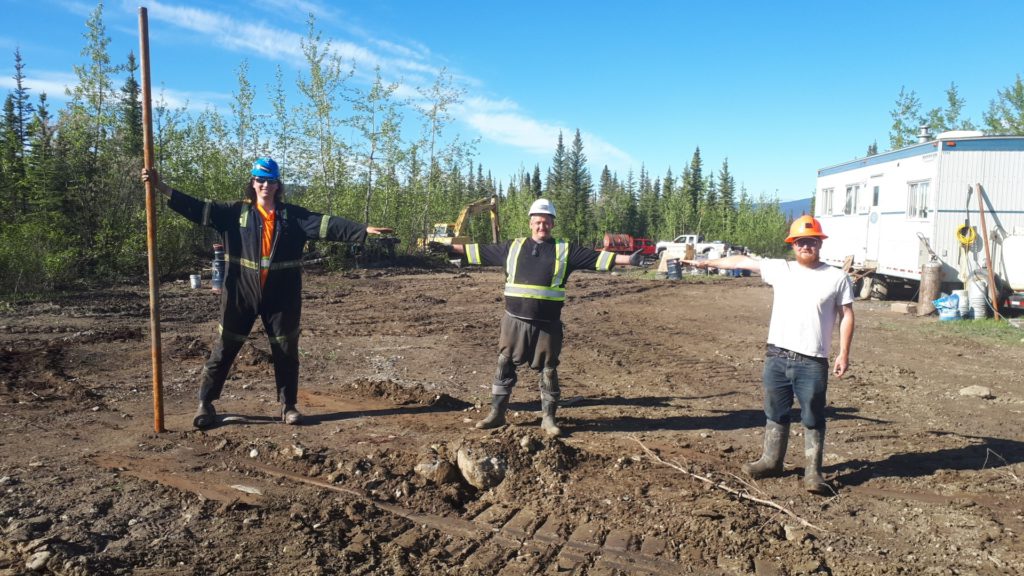
Both gold projects are adjacent to producing mines—Victoria Gold’s (TSX: VGCX; US-OTC: VITFF) Eagle mine and Alexco Resource’s (TSX: AXU; NYSE-AM: AXU) Bellekeno silver mine at the Keno Hill project.
Last year Banyan produced an initial resource estimate for the Airstrip and Powerline zones at AurMac. Together they have 52.6 million tonnes of inferred resource grading 0.54 gram gold per tonne, containing 903,945 oz. gold. The Airstrip zone is the larger with 46 million tonnes at 0.52 gram gold per tonne, containing an estimated 774,926 oz. gold. The numbers were derived using a pit-constrained resource and a 0.2 gram gold per tonne cut-off grade.
This year’s drill campaign focuses on expanding the Powerline zone in all directions. Results thus far feature: 186 metres grading 0.48 gram gold per tonne, including 41.7 metres at 1.39 grams gold per tonne; 7 metres grading 6.81 grams gold per tonne, including 1.2 metres of 35.2 grams gold per tonne; and 50.3 metres grading 0.7 gram gold per tonne. The company says mineralization appears consistent and is open in all directions. Metallurgical tests have recovered 90% of the gold in samples of oxide and sulphide mineralization from both Airstrip and Powerline.
Banyan acquired the Hyland property in 2013 from Victoria Gold. Exploration began the following year with drill highlights of 88.7 metres grading 0.24 gram gold per tonne, including 29.8 metres at 0.33 gram gold per tonne, and 23.7 metres at 0.37 gram gold per tonne.
The 2020 updated 43-101 technical report completed for the Main zone used a 0.3 gram gold-equivalent per tonne cut-off. There were 8.6 million indicated tonnes grading 0.78 gram gold per tonne (216,000 contained oz. gold) and 7.04 grams silver per tonne (2 million contained oz. silver). The inferred resource was 10.8 million tonnes grading 0.77 gram gold per tonne (266,000 contained oz. gold) and 5.32 grams silver per tonne (1.8 million contained oz. silver). The company is making plans to restart exploration at Hyland next year.
Banyan Gold has a market capitalization of C$54.8 million ($43.3m).
Gatling Exploration
Gatling Exploration (TSXV: GTR; US-OTC: GATGF) was spun off from Bonterra Resources (TSXV: BTR; US-OTC: BONXF) in 2018 and owns 100% of the Larder project, 35 km east of Kirkland Lake, Ontario.
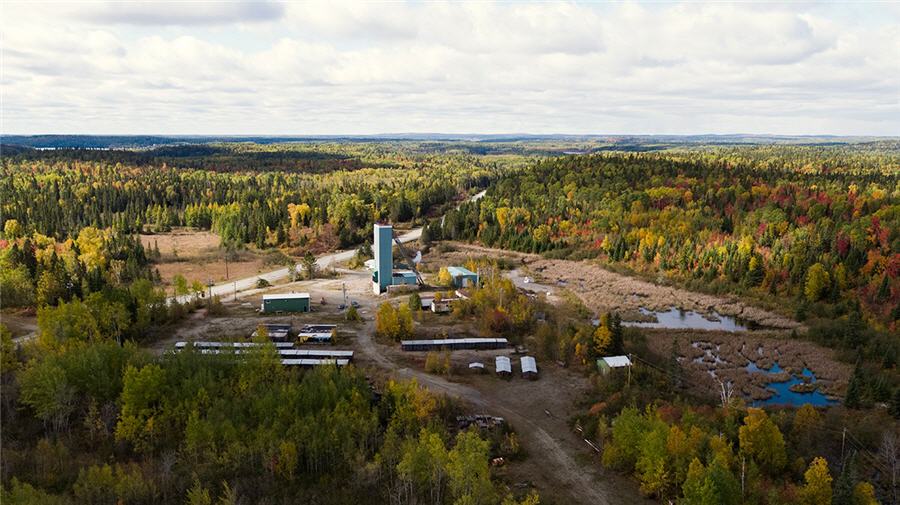
Central to the project on the Cadillac-Larder break is the past-producing Cheminis deposit. To the west is the Fernland deposit and to the east is the Bear deposit. The three deposits are connected along strike. They have a southeast plunge and are open both at depth and along strike.
In 2011 a historic, non-43-101 compliant resource estimate for the Cheminis and Bear deposits outlined 335,000 indicated tonnes grading 4.07 grams gold per tonne (for 43,800 oz. contained gold) and 5.1 million inferred tonnes grading 5.55 grams gold per tonne (for 917,000 contained oz. gold). A cut-off of 2.5 grams gold per tonne and a gold price of $1,207 per ounce was used.
Gatling has been drilling the Larder project since acquiring it in 2019. At Fernland, assays have returned 11.9 grams gold per tonne over 4.0 metres; 1.1 grams gold per tonne over 101.3 metres; 0.8 gram gold per tonne over 114.3 metres; and 1.5 grams gold per tonne over 200.7 metres. The shallow mineralization at Fernland may have the potential for a starter operation.
The past-producing Cheminis deposit has a vertical shaft with six levels to a depth of 330 metres. Assays here have included 5 metres grading 12.3 grams gold per tonne; 39.7 metres at 2.5 grams gold per tonne, 6.0 metres at 6.1 grams gold per tonne, and 2 metres at 7.1 grams gold per tonne.
Drilling at the Bear deposit has returned 6.1 metres grading 20.7 grams gold per tonne; 8.0 metres at 10.8 grams gold per tonne, 5 metres at 11.2 grams gold per tonne, and 3 metres at 84.1 grams gold per tonne. Gatling is also drilling a fourth zone, Swansea, to the west focusing on near-surface gold mineralization.
Earlier this year, Gatling announced it was adding a second drill rig at the Bear deposit to accelerate its exploration program ahead of a new resource estimate due by year-end. Metallurgical tests on samples of all three deposits were also begun.
In 2019 the company acquired and began drilling the Kir Vit prospect, 6 km north of Larder. To date 13 of 16 holes have intersected mineralization grading more than 1.0 grams gold per tonne along a 500-metre strike length. Highlights of the program included 3 metres grading 5.9 grams gold per tonne;3 metres of 5.1 grams gold per tonne; and 2 metres of 4 grams gold per tonne. The drill program is continuing. Channel sampling at Kir Vit has returned grades such as 16.2 grams gold per tonne over 1 metre and 2.8 grams gold per tonne over 7 metres, including 8.2 grams gold per tonne and 4.4 grams gold per tonne.
Gatling has a market capitalization of C$16.3 million ($12.9m).
Gran Colombia Gold
Gran Colombia Gold (TSX: GCM; US-OTC: TPRFF) operates the Segovia mine in Colombia. The mine produced 196,362 oz. gold in 2020, and this year guidance is for between 200,000 and 220,000 ounces.
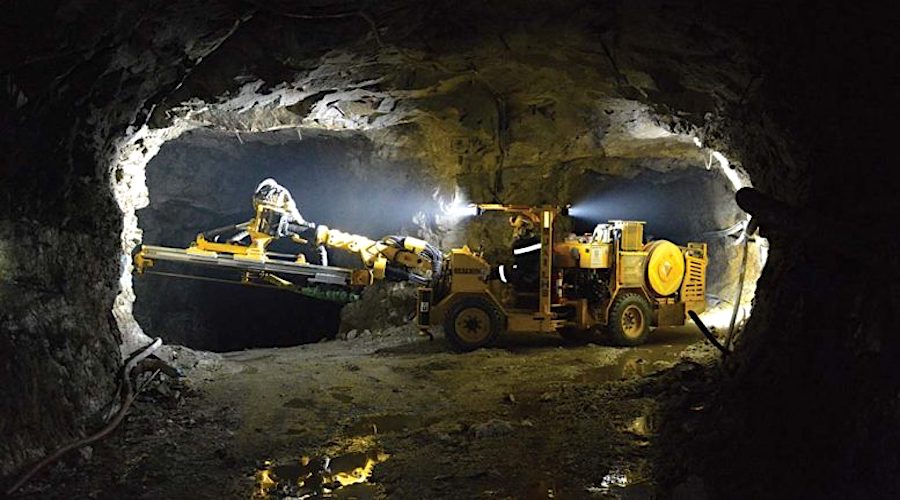
Segovia is made up of four separate underground mines exploiting only three of 27 known veins on the mining licence. The company is carrying out a 60,000-metre drill program — 40,000 metres as part of the in-mine and near-mine program and 20,000 metres to test high-priority brownfield targets on the unmined veins.
Segovia’s conventional 1,500-tonne-per-day Merrill-Crowe mill treated a daily average of 1,280 tonnes of mineralized material with a head grade of 14.6 grams gold per tonne last year. The mill also accepts ore under contract for processing from small mines in the region. The contracted volume is about 12% of throughput.
At the end of 2020, Segovia had measured and indicated resources of 4 million tonnes grading 11.7 grams gold per tonne for 1.4 million contained oz. gold. There were an additional 3.7 million inferred tonnes grading 9.6 grams gold per tonne for 1.3 million contained oz. gold.
In March, Gran Colombia made a friendly, all-share offer valued at C$315 million for Gold X Mining (TSXV: GLDX), in which Gran Colombia previously owned an 18% stake. Gold X’s principal asset is the Toroparu advanced copper-gold project in Guyana.
The company raised C$300 million with which to develop the Toroparu gold-copper project. The environmental authorization and the development and fiscal stability agreement are complete for the project.
The Toroparu and Sona Hill deposits occur at the margin between batholiths and the surrounding metavolcanic host rocks. The hydrothermal alteration halo has the potential to host several satellite deposits.
A preliminary economic assessment completed in 2019 outlined a 24-year mine life with the two deposits producing a total of about 4.5 million oz. of gold. The initial capital requirement was pegged at C$378 million, with a further C$232 million phase two expansion financed from internal cash flow.
A conventional open-pit operation is planned. Carbon-in-leach technology will be used in the phase one operation of the mill, with a copper flotation circuit added in the second phase. Ore will be processed at a rate of 11,500 tonnes per day for the first 10 years and then increased to as much as 23,000 tonnes per day thereafter. The tailings storage facility will be staged and operated in three independent modules.
Gran Colombia gives both a gold resource and a silver-copper resource at Toroparu. The project has 252.6 million measured and indicated tonnes grading 0.91 gram gold per tonne for 7.4 million oz. contained gold and 128.9 million inferred tonnes grading 0.76 gram gold per tonne for 3.2 million ounces.
The copper-silver resources stand at 240.8 million measured and indicated tonnes grading 0.81 gram silver per tonne and 0.08% copper for 6.3 million oz. silver and 444 million lb. copper. The inferred resource is 117.3 million tonnes grading 0.7 gram silver per tonne and 0.04% copper for 276,000 oz. silver and 104 million lb. copper.
The two-phase 2021 drill program consisted of 20,750 metres in 114 holes. It confirmed a 4-km strike length of high grade, structurally controlled gold mineralization at Toroparu in minable widths of up to 100 metres vertical depth. High-grade pipes ranging from 5 grams to 20 grams gold per tonne are surrounded by a lower grade halo grading from 0.5 gram to 5 grams gold per tonne. Gran Columbia posits a large, disseminated deposit amenable to underground mining. A preliminary economic assessment will be completed later this year.
Gran Colombia also owns about 44% of Aris Gold (TSX: ARIS; US-OTC: ALLXF), which operates the Marmato gold mine in Colombia; about 27% of Denarius Silver (TSXV: DSLV) and about 26% of Western Atlas Resources Inc. (TSXV: WA).
Gran Colombia has a market capitalization of C$478.6 million ($378m).
Kenorland Minerals
Kenorland Minerals (TSXV: KLD; US-OTC: NWRCD) has three projects it considers flagship exploration assets: Frotet, a high-grade gold project in northern Quebec, about 100 km north of Chibougamau and the Healy gold and Tanacross copper-gold-molybdenum projects in Alaska. Its Frotet project is a joint venture with Sumitomo Metal Mining Canada.
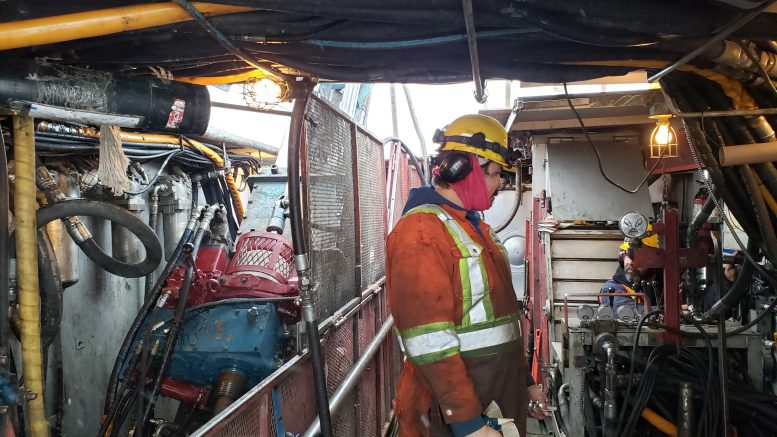
One of its most exciting recent finds at Frotet is Regnault, which it announced in July 2020. Kenorland announced the discovery from its initial drill program at the R1 structure, and it appears to be a previously unknown gold system with no historic drilling. The best hole, 20RDD007, intersected 29.1 metres grading 8.47 grams gold per tonne, including 11.1 metres of 18.43 grams gold per tonne.
Assays from 15 holes, seven of which targeted the R2 structure, were received earlier this year. Hole 21RDD041 returned 1.9 metres grading 13.59 grams gold per tonne and 30.8 grams silver per tonne. The same hole also intersected 1.62 metres grading 11.17 grams gold per tonne and 21.96 grams silver per tonne, including 0.4 metre at 40.4 grams gold per tonne and 78.9 grams silver per tonne. Hole 21RDD045 cut 2.6 metres averaging 6.98 grams gold per tonne and 15.47 grams silver per tonne, including 0.4 metre of 44.2 grams gold per tonne and 90.1 grams silver per tonne.
The joint venture has 20,000 metres of drilling planned this summer at Regnault and further regional exploration on the Frotet property.
In Alaska, Kenorland optioned 70% of the Healy gold project, 180 km from Fairbanks, from Newmont (TSX: NGT; NYSE: NEM) in 2018. The property is located within the Tintina gold belt. Kenorland mounted a drill program in 2019 consisting of 10 shallow, reverse circulation holes at Healy’s Bronk target area. The next year further geochemical and geophysical surveys were done. This year the company began its first diamond drill program. Four thousand metres in 10 holes were planned to test the Thor, Bronk and Spike targets defined by soil anomalies. Assays were not available at press time.
This year the company plans to spend a total of $17 million on exploration at Healy and Frotet.
Kenorland’s 100%-owned Tanacross property covers a prospective copper-molybdenum-gold porphyry occurrence about 335 km southeast of Fairbanks. It lies within the Yukon-Tanana Terrane. No outcrops have been noted on the property. The company holds 45,900 hectares of state-owned land. Tanacross has a 25-person camp with an airstrip at the property.
Kenorland has several other properties in its pipeline. In Quebec these include Chicobi (gold and volcanogenic massive sulphide); Chebistuan (gold and nickel-copper-platinum group metals); O’Sullivan (gold); and Hunter (gold and volcanogenic massive sulphides). In Ontario it holds the South Uchi gold property. Though all are less advanced than Frotet, Healy and Tanacross, these projects await further attention.
Kenorland has a market cap of about C$32 million ($25m).
Moneta Porcupine Mines
Moneta Porcupine Mines (TSX: ME; US-OTC: MEAUF) has been consolidating its land package in the Timmins gold camp of Ontario. Its latest acquisition was its C$48 million purchase of O3 Mining’s (TSXV: OIII; US-OTC: OIIIF) Golden Bear assets, including the Garrison gold project.
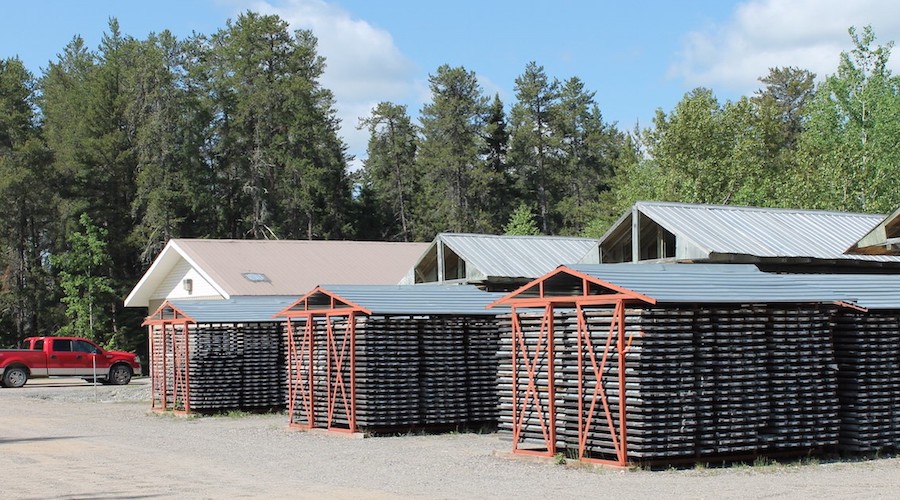
Moneta closed the deal in January and folded the assets into its flagship Tower gold project, 100 km east of Timmins, near Matheson. Tower now includes 100% ownership of both the Garrison and Golden Highway gold properties, making the company one of the largest landholders in the camp.
The Tower project has a defined resource base. Recoverable by open pit methods, there are 111.7 million indicated tonnes grading 0.89 gram gold per tonne and 79.4 million inferred tonnes at the same grade. The underground portion contains 4.9 million indicated tonnes grading 4.05 grams gold per tonne and 2.1 million inferred tonnes grading 4.21 grams gold per tonne. Contained gold in all resources is estimated to be almost 8 million ounces.
The goal of this year’s drill program at Tower is to expand resources since there are multiple deposits at the project. There are potential pits at the Windjammer South, 55, Westaway, and Garrison deposits, as well as underground potential at Garrison and Golden Highway.
The deposit with the most advanced program is the South West deposit at the Golden Highway project. A preliminary economic assessment completed in September 2020 outlined an underground mine that could produce 719,000 oz. of gold over its lifetime with average annual output of 75,700 ounces. Costs would be low with initial capital of C$144 million and sustaining capital of C$135 million. The total all-in sustaining cost would be $747 per ounce.
The South West project carries an after-tax net present value, at a 5% discount rate, of $236 million and an after-tax internal rate of return of 30% at a gold price of $1,500 per ounce. After-tax payback would be 3.4 years. The underground project could generate average annual free cash flow of C$49 million.
Moneta anticipates using ramp development with longitudinal long-hole stoping and bulk underground mining methods. The mine life would be 11 years, including a two-year ramp up period. Peak production of 85,700 oz. gold would be reached in year five.
The PEA set aside about C$40 million for processing facilities. Because the South West deposit is only a few kilometres from Kirkland Lake Gold’s (TSX: KL; ASX: KLA) Holt mill, toll milling may be an option that would reduce capex costs.
The potential exists elsewhere at the Golden Highway project to expand production from additional deposits on the property.
Moneta also has exploration projects in the Porcupine gold camp, closer to Timmins. The company owns 100% of the Nighthawk Lake, North Tisdale and Kayorum properties. The historic Moneta gold mine, which produced 149,250 oz. of gold between 1938 and 1943, is located on the Kayorum claims.
West of Timmins, the company holds 100% of the Denton property, known primarily for its two historical nickel zones discovered by Hollinger Mines in 1958 and 1960.
Moneta Porcupine Mines has a market capitalization of C$210 million ($166m).
Seabridge Gold
Seabridge Gold (TSX: SEA; NYSE: SA) is ranked among the world’s ten companies with the largest gold reserves, thanks to its prefeasibility stage Kerr-Sulphurets-Mitchell and Courageous Lake projects. The two projects hold a combined 45 million oz. of gold in proven and probable reserves. In addition, Seabridge has more copper per common share issued than any copper company. The KSM project has permits covering 17.6 billion lb. of copper in the measured and indicated categories.
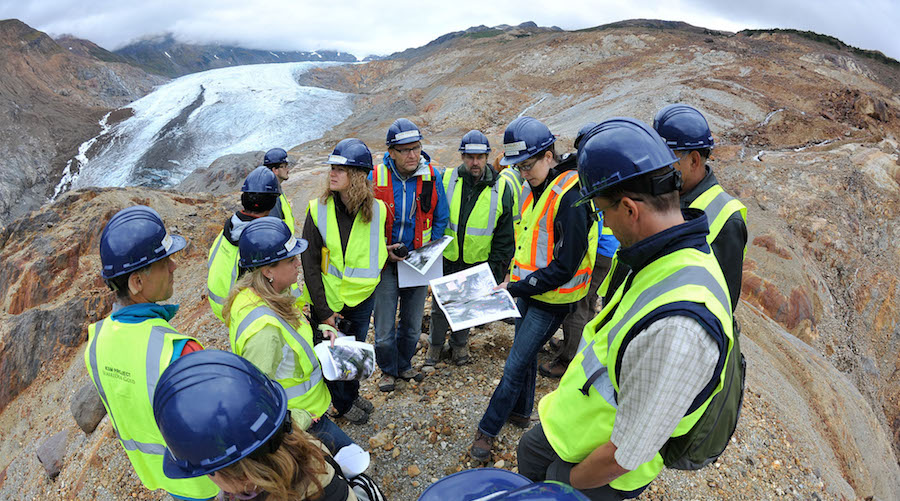
Both projects received provincial and federal environmental approvals in 2014.
The KSM copper-gold project is located about 65 km northwest of Stewart, B.C. The Kerr deposit is a north-south trending tabular porphyry intrusive complex. It has a strike of 2,400 metres and extends vertically at least 2,400 metres. The west limb is up to 500 metres thick, and the east limb is up to 300 metres thick.
Sulphurets is structurally complex and distinctly different from the other KSM deposits. Its defining feature is a series of thrust fault panels intruded by several narrow dykes, sills and stocks related to the diorite intrusion associated with Kerr and Mitchell. The main Sulphurets body has a lens shape, dipping about 30 degrees to the northwest and extending horizontally for 2,200 metres, down dip for 550 metres and up to 330 metres thick.
The Mitchell deposit is a composite intrusive complex of extensively foliated rocks. The mineralization outcrops in an elliptical pattern covering 1,000 metres east-west and 850 metres north-south with a vertical extent of 1,100 metres.
Iron Cap is the farthest north deposit in the KSM district. It is above the Mitchell deposit in a panel between the Mitchell and Sulphurets thrust faults. Iron Cap has a tabular shape striking 1,500 metres along a north-south strike and dipping about 60 degrees to the west. The deposit is at least 1,500 metres down dip and up to 800 metres thick.
At the end of 2020, the four deposits at the KSM project had total proven and probable reserves of 2.2 billion tonnes averaging 0.55 gram gold per tonne, 0.21% copper, 2.6 grams silver per tonne, and 42.6 parts per million (ppm) molybdenum. Together the contained metal content sits at 38.8 million oz. gold, 10.2 billion lb. copper, 183 million oz. silver, and 207 million lb. molybdenum.
Measured and indicated resources at KSM total 3 billion tonnes averaging 0.52 gram gold per tonne, 0.21% copper, 2.8 grams silver per tonne, and 48 ppm molybdenum. The inferred resource (recoverable both by open pit and underground methods) is 4.6 billion tonnes averaging 0.38 gram gold per tonne, 0.32% copper, 2.4 grams silver per tonne, and 29 ppm molybdenum.
Seabridge has outlined a 52-year mine plan, as described in the prefeasibility study updated in 2020. The after-tax numbers include a net present value (at a 5% discount rate) of $6 billion. There would be a four-year payback on a $5.2 billion pre-production capital expenditure. Production over the life of mine would be 27.6 million oz. gold and 20.8 million lb. copper. A 170,000-tonne-per-day processing plant would be built. The total cost of production is estimated to be US$4 per oz. gold, net of by-product revenues and inclusive of all project capital requirements.
The company is completing data collection to advance KSM to final feasibility. Further exploration has been suspended because the known resources will support a multi-generational project.
In December 2020, Seabridge bought the Snowfield gold property, adjacent to the KSM project, from Pretium Resources (TSX: PVG; NYSE: PVG) for a $100 million cash payment, a 1.5% net smelter return royalty, and a future contingent payment. Work is underway on integrating Snowfield into the KSM feasibility study.
Snowfield has measured and indicated resources of 1.4 billion tonnes averaging 0.59 gram gold per tonne, 1.72 gram silver per tonne, 0.06% copper, 85.5 ppm molybdenum, and 0.51 ppm rhenium. The metal contained in these resources totals 25.9 million oz. gold, 75.8 million oz. silver, 2.98 billion lb. copper, 258.3 million lb. molybdenum, and 22.5 million oz. rhenium. The inferred Snowfield resource is 833.2 million tonnes averaging 0.34 gram gold per tonne, 1.9 gram silver per tonne, 0.06% copper, 69.5 ppm molybdenum, and 0.43 ppm rhenium. Contained metals adds up to 9 million oz. gold, 40.1 million oz. silver, 127.7 million lb. molybdenum, and 11.5 million oz. rhenium.
Seabridge also has a 100% interest in the Iskut project, 30 km from KSM. Formerly known as Bronson Slope, it became part of Seabridge’s portfolio with the acquisition of Snip Gold in 2016. The Quartz Rise gold-copper porphyry target was drilled last year, revealing mineralized intervals of up to 158 metres long and grading 0.16 gram gold per tonne.
Iskut’s pit-constrained resources stand at 186.9 million measured and indicated tonnes grading 0.36 gram gold per tonne, 0.122% copper and 2.19 grams silver per tonne for 2.2 million oz. contained gold, 502.7 million lb. copper, and 13.2 million oz. silver. There are also 4.9 million inferred tonnes averaging 0.32 gram gold per tonne, 0.07% copper and 2.19 grams silver per tonne for 8.1 million oz. gold, 50,000 lb. copper and 350,000 oz. silver.
Seabridge says the Iskut property has magnetic and resistivity anomalies similar to the Kerr Deep zone. This year’s drill program is following up on previous work that the company says points toward a large gold-copper porphyry system.
The Courageous Lake gold project, 240 km northeast of Yellowknife in the Northwest Territories, is another Seabridge core property. It covers a land position 52 km long and covers about 85% of the Matthews Lake greenstone belt. There are two deposits — FAT and Walsh Lake. A 2012 prefeasibility study is being redesigned to a smaller, less capital intensive scale than originally planned.
In May 2020, Seabridge acquired 100% of the 3 Aces gold project from Golden Predator Mining for 300,000 shares and a 0.5% NSR royalty. Located in southwestern Yukon’s Selwyn Basin, the project is accessible year-round by road and has a 25-person camp.
In August, Seabridge restarted drilling its 100%-owned Snowstorm gold project in northern Nevada. It sits on the intersection of three major gold belts in the state. It was acquired from Paulson & Co. in a shares and warrant deal in 2017.
The company drilled Ordovician carbonate stratigraphy characteristic of Getchell style deposits in 2019, and last year confirmed the presence of gold mineralization. This year’s drill program is following up on promising intersections.
Seabridge Gold has a market capitalization of C$1.6 billion ($1.27bn).
Victoria Gold
Victoria Gold (TSX: VGCX; US-OTC: VITFF) declared commercial production in July 2020 at its wholly-owned Eagle (Dublin Gulch) gold mine in the Yukon, about 375 km north of Whitehorse. The open pit and heap leach operation produced 116,644 oz. gold last year and the company’s 2021 guidance has been set at between 180,000 and 200,000 ounces.
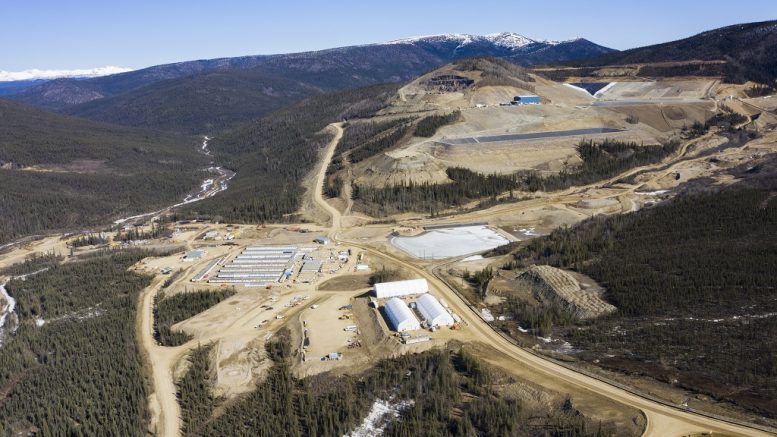
Gold is leached using a cyanide solution and recovered in an adsorption-desorption-regeneration carbon plant. The company estimates it will recover 2.4 million oz. of gold at an average recovery rate of 77% over a mine life of 13 years.
The Eagle deposit has proven and probable reserves of 148 million tonnes with a diluted grade of 0.64 gram gold per tonne for 3.1 million contained oz. gold. Approximately 110.4 million tonnes of mineralized material will come from this deposit.
A second deposit, Olive, is contributing 6.5 million tonnes per year of ore to the heap. It has proven and probable reserves of 7 million tonnes with a diluted grade of 0.95 gram gold per tonne for 200,000 gold ounces.
Victoria is examining what it calls ‘Project 250K’ that would raise Eagle’s output to 250,000 oz. gold per year. The company is examining year-round stacking of the heap and scalping the fines between crushers. Engineering is underway and a decision is expected in the third quarter of this year.
‘Project 2040’ would see the pit deepened and extend the mine life 10 extra years to 2040. The pit is currently planned to 350 metres, but the mineralization is known to extend to at least 650 metres. A 10,000-metre drilling program is underway and a resource update is expected by the end of the year.
Victoria is looking to the Dublin Gulch claim block as a district scale opportunity. Last year it trenched the Lynx target and drilled four diamond drill holes. Drilling returned 153.8 metres grading 0.49 gram gold per tonne, including 8.4 metres grading 6.14 grams gold per tonne, and 11.9 metres grading 1.26 grams gold per tonne and 13.5 metres of 1.12 grams gold per tonne.
The Raven target was drilled to a strike length of 450 metres, a width of 400 metres and a depth of 180 metres. The mineralization is open in all directions, so the company has made Raven the primary target of this year’s C$12.5 million drill campaign. An initial resource estimate is expected by the end of 2021.
The best holes reported last year included 3.95 grams gold per tonne over 19 metres and 4.48 grams gold per tonne over 13.7 metres. An intersection of 50.8 metres grading 2.63 grams gold per tonne was also returned.
In May, Coeur Mining (NYSE: CDE) announced its intention to acquire a 17.8% interest in Victoria Gold from Orion Mine Finance. Orion is reducing its interest in Victoria from 36% to 19.99% and remains the miner’s largest shareholder.
Victoria Gold has a market capitalization of C$964.4 million ($763m).
Vista Gold
Vista Gold (TSX: VGZ; NYSE: NGZ) wholly owns Mt Todd, which it describes as the largest undeveloped gold project in Australia. Located in the Northern Territory, about 250 km southeast of Darwin, the project includes the suspended Mt Todd mine.
As a brownfield development, Mt Todd has existing infrastructure including paved road access, a power grid, natural gas, fresh water, a tailings impoundment area, and a surrounding pool of labour and technical personnel.
Gold and tin were discovered in the Mt Todd area in 1889. Gold production began about 1902, followed in 1913 by the discovery of tungsten in the region, and the hunt for uranium in the 1950s. Exploration once again turned to gold in the 1980s. The Batman deposit was discovered in 1988.
Batman operated as a heap leach from 1993 to 1997 but was a victim of low gold prices at the time. A joint venture attempted to restart production in 1999, but operations ceased in July 2000, and most of the equipment was sold and removed from the site.
Vista acquired the project in 2006 and since then, the company says it has spent $100 million at Mt Todd. It has invested in environmental programs, drilled over 60,000 metres, tripled the gold resource, and addressed operational issues that challenged previous owners.
The company also completed a preliminary feasibility study in 2013. Major mining and environmental approvals have been received from the territorial and federal governments. After metallurgical testing, project optimization to reduce costs, and the rise of the gold price, the company updated the prefeasibility study in September 2020.
The recent PFS anticipates an owner-operated open pit with a mining rate of 50,000 tonnes per day. The mill would have an annual throughput of 17.8 million tonnes with an average head grade of 0.82 gram gold per tonne and 0.06% copper. The flowsheet would include crushing, high pressure roll grinding and ore sorting before placement on the heap. Gold would be recovered from pregnant solution using a carbon-in-pulp circuit.
Work has begun on the Mt Todd feasibility study, due in the first quarter of 2022.
Included in the reserve and resource numbers are three deposits — Batman, Heap Leach and Quigleys. Together they have proven and probable reserves of 221 million tonnes grading 0.82 gram gold per tonne for 5.5 million contained oz. gold. This estimate is included in the measured and indicated resources of 299.1 million tonnes grading 0.82 gram gold per tonne for 7.9 million contained oz. gold.
The Batman orebody is the largest of the deposits. It has 277.8 million measured and indicated tonnes grading 0.82 gram gold per tonne and containing 7.4 million oz. gold.
Other than the Batman deposit, the company has not drilled other targets much below a depth of 100 metres.
Vista has four advanced targets: 1) Quigleys, which has potential to become a higher grade satellite target; 2) Wandie, which contains iron-ore-copper-gold (IOCG) targets; Golden Eye, which features sheeted vein mineralization (like Batman’s); and Gold-Tollis, a past-producer with limited deep drilling. Vista also has other early stage exploration targets: Wolfram Hill, El Sherana, Blanchards, Black Hill, and Driffield.
Vista Gold has a market capitalization of $96 million ($75.8m).
(This article first appeared in The Northern Miner)




